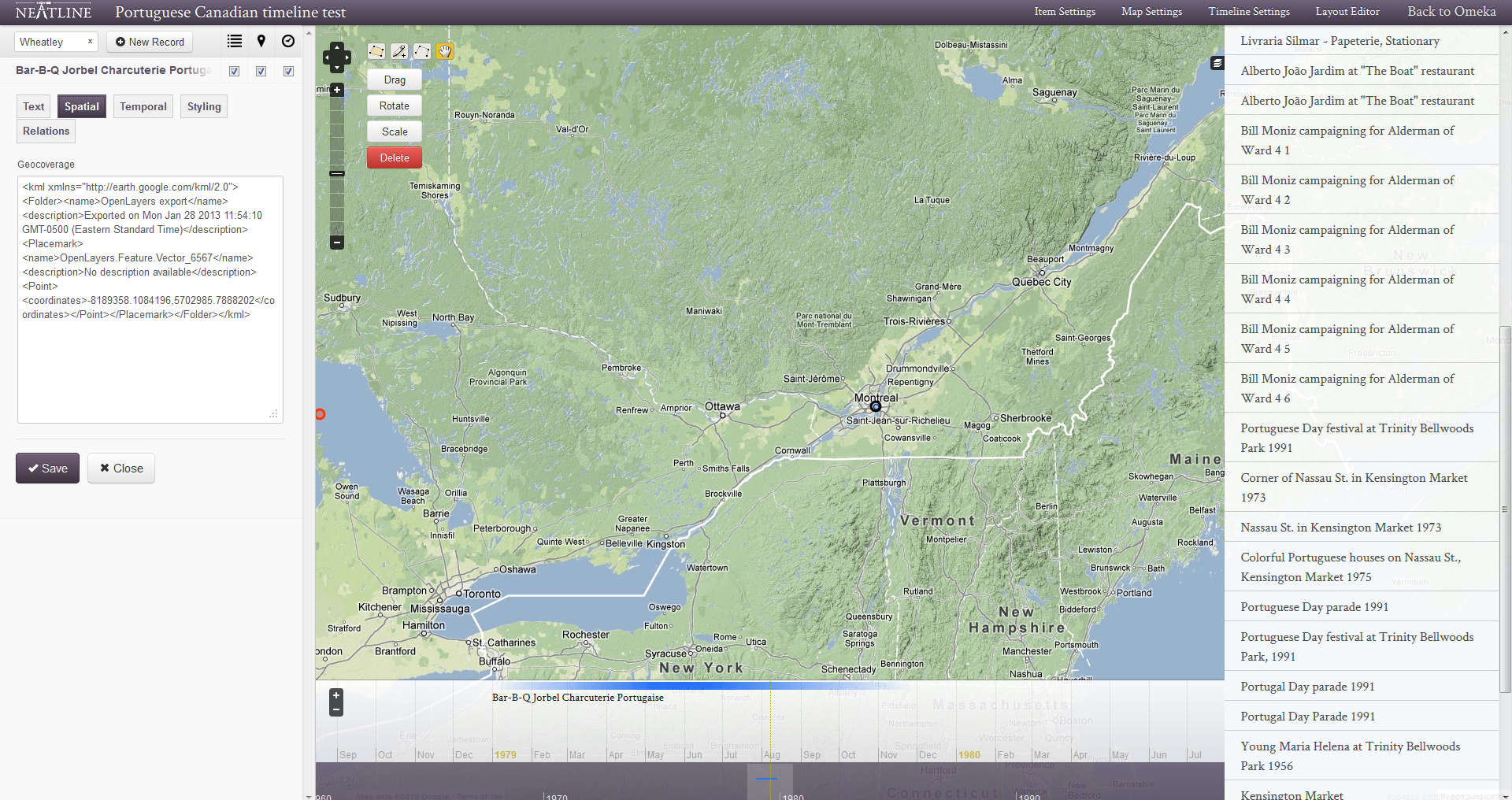Neatline offers considerably more flexibility in how staff can gather, manipulate and display digital objects in temporal and spatial contexts.
By running queries against an existing database of objects in Omeka, there is no need to duplicate tables of descriptive information already used to import content into your exhibit space.
The challenge is to have all spatial and temporal data inputted to standard so that there is a clean query result in your exhibit. Otherwise, you’re reentering content and embedding points manually before you even start structuring your narrative.
Neatline can facilitate the mapping of objects and events on a timeline so that viewers are brought along on a guided exploration of content. Has considerable potential as a pedagogical tool for graduate students engaging with communication techniques informed by digital humanities, public history and social media.

